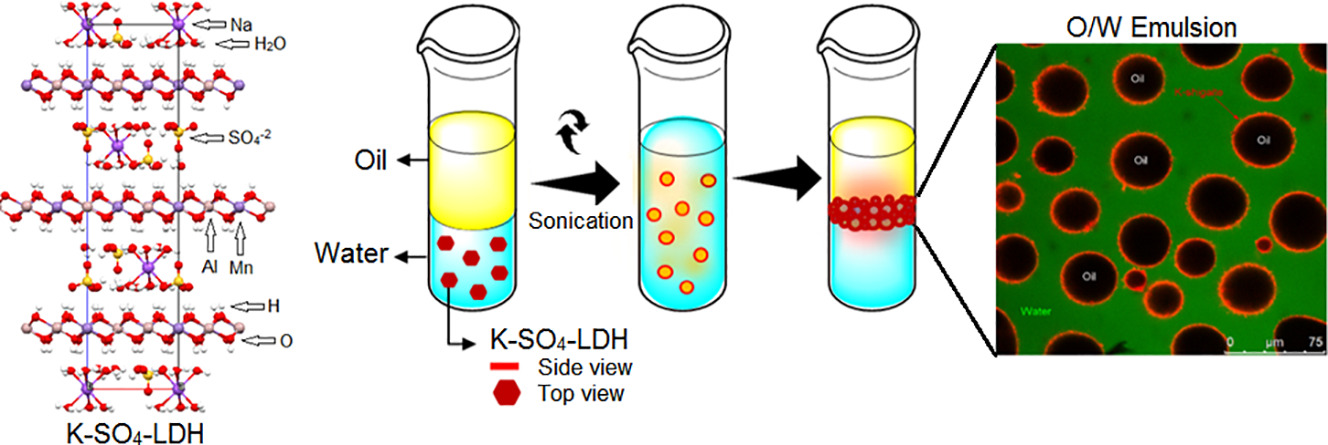A acadêmica Lilian Amaral teve seu artigo aceito para publicação na revista internacional Applied Clay Science (fator de impacto 3,89). No artigo, a formação e estabilidade de emulsões óleo/água sem a presença de surfactantes foram avaliadas. No projeto as emulsões foram estabilizadas com partículas de hidróxidos duplos lamelares, chamadas de emulsões de Pickering. O trabalho foi desenvolvido sob orientação dos professores Rilton Alves de Freitas e Fernando Wypych do DQ/UFPR.
O artigo pode ser acessado através deste link.
Abstract
Layered double hydroxide (LDH) intercalated with sulfate and potassium was synthesized by co-precipitation with increasing pH, presenting compositions similar to that of the mineral Na-shigaite ([Mn6Al3(OH)18][K(H2O)6(SO4)2].6H2O). We performed submicrometric layered particle characterization using X-ray diffraction (XRD), Fourier-transform infrared spectroscopy (FTIR), scanning electron microscopy (SEM) and energy dispersive spectroscopy (EDS) as stabilizers in Pickering emulsions. Emulsification abilities were determined using macroscopic observations, optical microscopy and fluorescent confocal laser scanning microscopy (CLSM), using different oil fractions and particle contents and comparing the size distributions of the emulsion droplets obtained. LDH particles produced thin films on oil-water droplet interfaces and reduced the emulsion surface tension from 61 to 55 × 10−3 Nm−1, suggesting that LDH particles adsorbed at the interface, reducing oil-water contact area and the system interfacial energy. Theoretical calculation of coverage (C) showed that only 0.25 wt% of particles, at 0.54 o/w fraction, was required for drop stabilization. The particles generated emulsions with high coalescence stability (14 days after preparation). CLSM images demonstrated the ability of the LDH particles to stabilize oil-in-water interface, water-in-oil interface and multiple emulsions, depending on the concentration of oil in the mixture.

